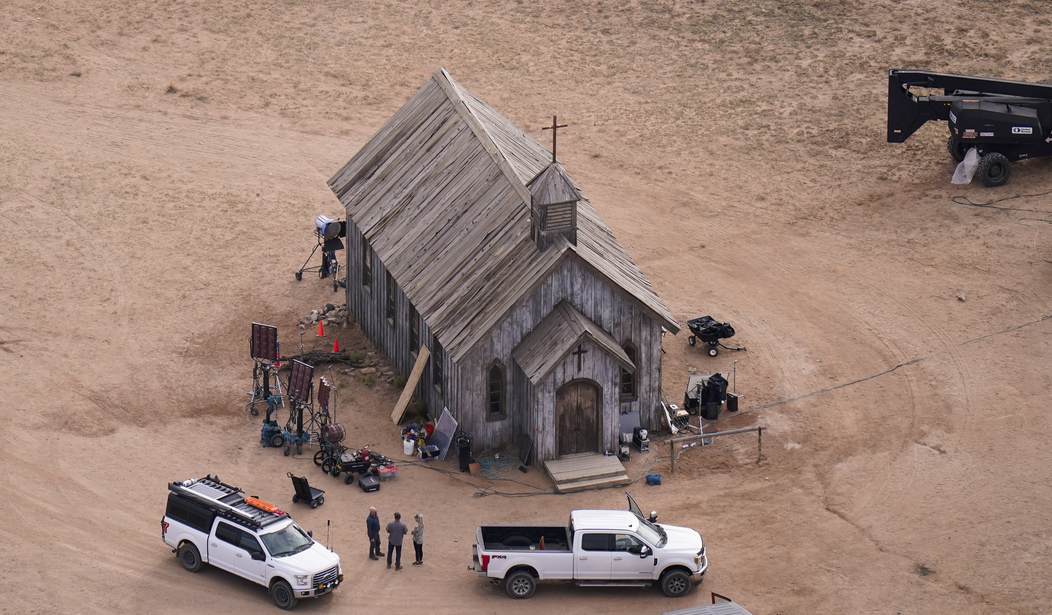Complicating the already messy story of how Alec Baldwin managed to shoot and kill Halyna Hutchins on the set of the movie Rust even further, a New Mexico District Attorney has come forward and asserted that Baldwin’s claim about never pulling the trigger might be true. Santa Fe District Attorney Mary Carmack-Altwies did an interview with Vanity Fair this week in which she said that her own investigation of the incident suggests that Baldwin may be correct and that the weapon may have fired without the trigger being pulled. But as we’ll discuss in a moment, there are a number of issues related to this investigation that bear further scrutiny. And even if her findings turn out to be accurate, that doesn’t mean that there still weren’t some totally reckless gun-handling activities taking place on the set. (New York Post)
Alec Baldwin may have fired the shot that killed “Rust” cinematographer Halyna Hutchins without pulling the gun’s trigger, a New Mexico prosecutor says.
Santa Fe District Attorney Mary Carmack-Altwies told Vanity Fair she had watched Alec Baldwin’s bombshell interview with ABC in December and was drawn to the actor’s claim that he did not pull the trigger.
“You can pull the hammer back without actually pulling the trigger and without actually locking it,” Carmack-Altwies said. “So you pull it back partway, it doesn’t lock, and then if you let it go, the firing pin can hit the primer of the bullet.”
Right off the bat, let’s note that Carmack-Altwies isn’t even part of the ongoing investigation into the shooting, so her self-described “unofficial investigation of her own” is unlikely to show up in a courtroom. She’s not even involved in the case. She watched Baldwin’s interview on ABC News and thought Baldwin’s claims sounded unlikely so she decided to look into it herself.
She also admitted that she “didn’t know too much about guns, certainly not about 1850s-era revolvers.” That’s all well and good, but it’s worth pointing out that we’re not dealing with a subject matter expert here.
Further, she’s never had a chance to look at the actual Colt revolver that Baldwin was using on the set. She instructed one of her investigators to bring “his old-style revolver” into the office so they could do some testing of it. She claims that after having multiple people inspect the weapon to make sure it wasn’t loaded (props to her for doing that much), they discovered that the hammer on the revolver could be pulled part-way back and then released, allowing it to strike the firing pin.
Depending on the model, that may well be true. But if you look at the construction of a Colt revolver of that type, you’re asking a lot from the gods of chance to make this explanation work. When the hammer is fully down in the safety position, there is simply no way that the weapon is going to discharge. If you pull the hammer a short way back (approximately 3/4 of an inch) into the half-cock position, the hammer is held in place by a pin and unable to spring forward unless the apparatus is damaged. (Something that would have been detected by the armorer while inspecting the weapon.) Further, the trigger is locked and cannot be moved while in the half-cock position unless the mechanism is similarly damaged. At that point, the cylinder can be freely rotated.
If you continue pulling the hammer back until it clicks into the fully cocked position, it is now ready to fire as soon as the trigger is pulled. So is it possible that the hammer could have been drawn back short of the half-cock position and then been released? Perhaps, but as the hammer is pulled back, a pawl rotates the cylinder to line up the next round of ammunition with the firing pin. If it was only partially pulled back, there shouldn’t have been a round lined up and available to strike. (Or at least as I understand it. I’ll allow the experts to chime in here.)
But let’s just say that Carmack-Altwies theory is somehow absolutely correct and Baldwin never had his finger inside of the trigger guard. That means that he was still pointing the revolver at the camera crew and pulling the hammer back. (On a weapon that he obviously never checked to see if it was unloaded.) That’s still a gross violation of safe firearms-handling practices and he was still the only human being involved in an action that led to the revolver discharging. Is that really all that much different than if he had pulled the trigger? It certainly doesn’t seem that way to me.







Join the conversation as a VIP Member